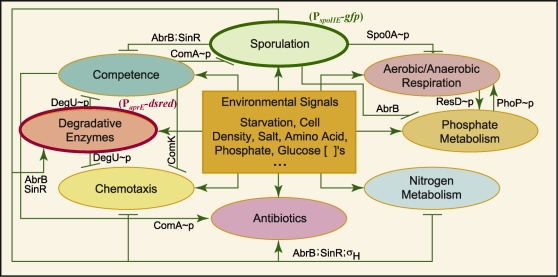Figure 1. The B. subtilis stress response meta-network, where each oval represents both a stress response and the regulatory network of 100 or so interacting molecular species that regulates it.
Among the many ingenious genetic and biochemical programs employed by B. subtilis to cope with environmentally adverse conditions are its ability to take up extracellular DNA, competence [40], [76]; differentiate into an inert heat-, chemical, and UV-resistant spore [37]; secrete degradative enzymes to identify and digest new food sources [77]; become motile and chemotax toward possibly better surroundings [78]; synthesize antibiotics to eliminate competitors in the same ecosystem [79], [80]; turn on alternative metabolic pathways, and form biofilms ([81], not shown), just to name a few [38]. The cross-repressive feedback between sporulation and competence, and the many positive feedback loops within each large ‘individual’ stress response pathway [10], [36]–[40], [82], are suggestive of switches and other elements that could potentially encode memory. The two stress response pathways monitored in our experiments, sporulation and synthesis of the degradative enzyme subtilisin, are denoted by bold-faced ovals. The fluorescent reporters (GFP and DsRed) fused to the respective promoters PspoIIE and PaprE are indicated (see Materials and Methods).

